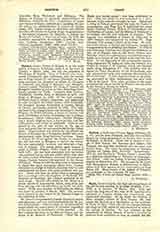

Casot, JEAN—JACQUES, the last surviving Jesuit of the old Canada mission, b. in Liege, Belgium, October 4, 1728; d. at Quebec, March 16, 1800. With him ended the long line of the sons of St. Ignatius who labored in Canada during the seventeenth and eighteenth centuries. At his death the Society of Jesus became extinct in New France. He first joined the Society as a lay brother at the novitiate in Paris, December 16, 1753, and left for Canada towards the close of 1756, where he was employed as cook at the college of Quebec. He was ordained to the priesthood by Bishop Briand, of Quebec, in order to preserve from extinction as long as possible the Society of Jesus in Canada. He was an humble and devout religious who “deprived himself of the very necessaries of life, in order that he might expend the whole of whatever property he had received from his deceased brethren in promoting and multiplying as widely as he could different works of zeal and charity” (English Meaology, S.J.). Upon his decease, the property of the Jesuits in Canada passed into the possession of the British Crown. His portrait forms the frontispiece of Thwaites’ “Jesuit Relations” (Cleveland, 1896-1901), LXXI, 125.
EDWARD P. SPILLANE

